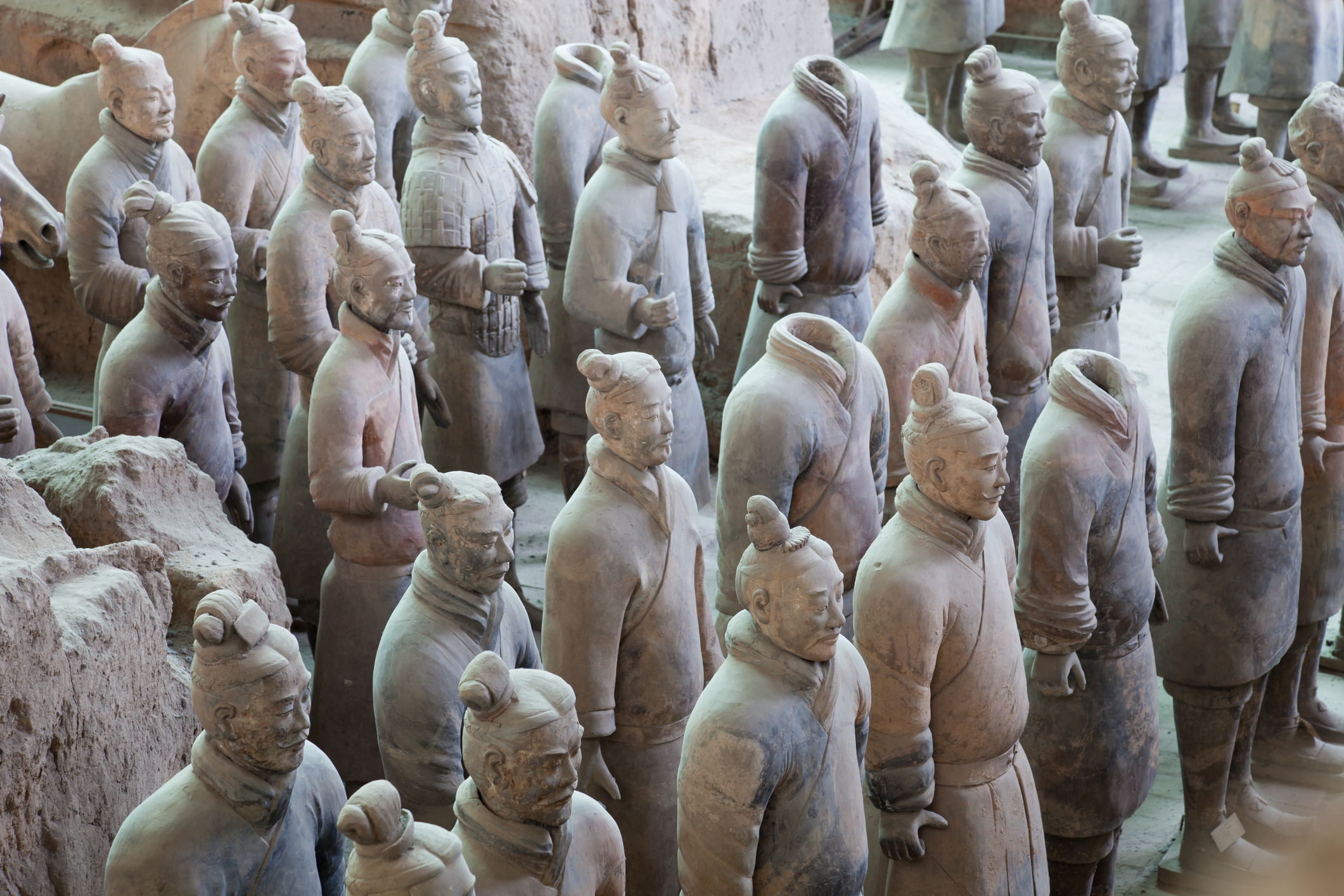We don’t need a revolution to find political redemption.
Mining the Maoist Playbook

Conservatives must adopt guerilla tactics to win the battle for hearts and minds.
American conservatives can be tiresome gloaters who devote an obscene amount of scribbling toward first principles, constitutional rights, and the like. They hold a self-assured conviction that conservative political philosophy, informed by a realistic and traditional understanding of human nature, is the lodestar by which any political community should be guided.
Instead of devoting so much time to political philosophy though, perhaps conservatives should have studied strategy and tactics. The progressive political left over the past few decades executed a long march through almost every major institution in every field in modern society. Journalism, entertainment, finance and big business, nonprofits, the administrative state, and so on have more or less been captured. Conservatives, by contrast, being inherently cautiously defensive, were outmatched. Taking the position of protecting first principles bred inertia instead of action, and only recently has the political right awakened to the grim reality that it has been outplayed in the public square.
It’s clear that the old political playbooks for conservatives are worthless. A new, long-term political strategy is required. It is here that one must put forward a rather provocative suggestion: conservatives should learn from their opponents and steal their playbook. More to the point, conservatives should study—and ultimately derive many a useful lesson—from the most successful case of a left-wing political insurgency in contemporary history: Mao Zedong and the Chinese Communist Party (CCP).
From Sparks to Prairie Fires
When the Chinese Civil War first broke out between the CCP and the nationalist Kuomintang (KMT), the CCP got spanked. Efforts to take rich and densely-populated urban areas were a failure, as were attempts at launching insurrections. The remnants of the Party and its armed forces, the Red Army, either hid in a few urban safe houses or sought refuge deep in the remote Chinese countryside.
It is in this context that a young Mao wrote a letter called “A Single Spark Can Start A Prairie Fire,” criticizing “certain pessimistic views” within the CCP, and laying out his strategy “to build the confidence of the masses toward the nationwide revolution.” Mao argued that the CCP’s strategy should be the establishment of “base areas,” described by Harvard scholar Tony Saich as “mini-states to be consolidated and to provide a developmental model superior to the corrupt nationalist regime with its capital in Nanjing.” From there, the CCP would fight a “people’s war” of maintaining local support, drawing the enemy (from the urban areas) into the rural countryside territory (and away from supply lines), and bleed them out. In short, the CCP would fight where it, not the enemy, was strong, gradually accumulate power, and then later expand outwards.
This strategy, called nongcun baowei chengshi (“using the countryside to surround the cities”), sometimes used interchangeably with defang baowei zhongyan (“using the local to surround the center”), is still used by the CCP to this day. In their recent book, Hidden Hand: Exposing how the Chinese Communist Party is Reshaping the World, CCP experts Clive Hamilton and Mareike Ohlberg detail how these approaches are even used within the United States, beneath our very noses.
In the midst of the Trump administration’s trade war with China in mid-2019, the Chinese state-run press agency Xinhua put out an article on American state and local officials “unwavering willingness to enhance cooperation despite simmering trade tensions.” The article quoted Oregon governor Kate Brown, Los Angeles deputy mayor Nina Hachigian, and former Missouri governor Bob Holden, all of whom lambasted Washington’s position as being harmful to their local economies. What wasn’t mentioned in the article were the ties that these politicians (and others) had to the CCP. Holden helped start Missouri’s first Confucius Institute in 2005 and is the CEO and chair of the United States Heartland China Association, which works closely with the China-United States Exchange Foundation—an organization that is registered as a foreign principal for China, has strong CCP ties, has been called “an initiative to spread [CCP] ideology and to manipulate overseas opinions towards China through cooperating with academic institutions and think tanks in the U.S.” by Hong Kong pro-democracy advocates, and is funded and chaired by Tung Chee-hwa, a Hong Kong-based shipping tycoon and vice chairman to the Chinese People’s Political Consultative Conference (the country’s top political advisory body).
In fact, a few weeks before the Xinhua article was released, Holden attended the U.S.-China National Governors Collaboration Summit in Kentucky, organized jointly with the Chinese People’s Association with Foreign Countries—a known front for CCP influence whose chairman has suggested that the U.S. Army unleashed the coronavirus pandemic in China. Though the event was billed as a neutral ground for investors to “meet one-on-one and discuss possible investment projects,” its real purpose is pure nongcun baowei chengshi/defang baowei zhongyan.
This summit and other such “outreach efforts” aim to cultivate ties with political leaders at the state and local level who may one day graduate to national-level politics (with increased influence), and who can exert political pressure on Washington from their present positions. In other words, “using the local to surround the center”—and all while going around the traditional (foreign policy) establishment that is meant to guard against such influences.
There are other political stratagems that are being used right now to secure CCP influence—both in the United States and abroad. Consider yi shang bi zheng (“using business to pressure government”), which makes use of business ties, lobbies, and associations. For example, a new group composed of 661 U.S. companies and associations called Tariffs Hurt the Heartland (THH) put out an open letter addressed to Donald Trump. While the letter and its contents were earnest—the businesses were complaining of the effects of tariffs and the trade war—a few details surrounding this otherwise routine event stand out. First of all, the letter and THH were prominently featured in China Daily and Xinhua (in fact, multiple times). Next, the organization chose former Louisiana Congressman Charles Boustany as its spokesperson. Boustany chaired the U.S.-China Working Group, and after leaving office he became a lobbyist and registered as a foreign agent to represent the U.S.-China Transpacific Foundation—an organization sponsored and funded by the Chinese government, with a travel program “intended to provide the Members of Congress and/or the congressional staff the opportunity to enhance their understanding on the cultural, economic, political and social developments of the People’s Republic of China, thus helping strengthen China-U.S. relations.”
Fighting Fire with Fire
The applicability of Maoist strategies—if not as a general framework—in the U.S. political context for conservative purposes is self-evident. The parallels between Mao’s conception of “base areas” and red states are obvious: conservative governance provides a socio-economic developmental model that is superior—or at the very least, more desirable—than what is on display in many of the liberal-controlled coastal states, as evidenced by the ongoing population flight from California and New York to Texas and Florida.
This local power, used wisely, can achieve remarkable ends. See no further than the strong push over the past few months in state-level legislatures to ban critical race theory in public schools. In a recent piece, Zaid Jilani notes that, “conservatives have the upper hand in this fight because they have chosen a favorable playing field. While cultural progressives dominate most institutions in America—media, the arts, the universities, and, increasingly, corporate America—Republicans retain a majority in state legislatures.”
Jilani also lambasts the entrenched old guard of the conservative movement that has “simply failed to generate any new ideas to tackle the problems of an evolving country.” These curmudgeons insist upon fighting yesterday’s fights: limited government and low capital gains taxes. States are only good for electing them and providing votes; the real right is in Washington, DC.
Ironically, this sort of position is similar to the old guard in the CCP during Mao’s time. While Mao wanted to utilize base areas as bastions of power, the old guard regarded them—in Saich’s words—as “transitory stations serving as launchpads for recapturing power in the cities, clearly their role was to provide resources and sustenance to the Red Army, which could drift in and out.” In other words, it was the cities that mattered to them, and they remained firm in committing precious few resources to what was clearly a losing fight.
The fight against critical race theory in the educational sphere can be regarded as a prime example of “using the local to surround the center.” The university system, after all, is the progressive liberal citadel of power. It is the “city” currently unassailable by conservatives—the most that can be claimed are a handful of reliably conservative small universities and a few centers within existing universities that act as conservative safe havens. But what about the “countryside”—the educational system outside of the university system, from elementary-level public schooling to specialized trade schools? Public schools, while heavily influenced by radical teachers’ organizations, are subject to state curricular oversight. Conservatives should not only ban critical race theory at state level, but go much further. They could:
- pass laws redirecting educational funds to parents rather than to the public system (which is but one option out of many);
- channel popular anger and opposition to public school coronavirus measures, critical race theory, and sitting school boards to new electoral measures to retaking the school boards;
- mandate a new round of teacher recertifications (to expel any radical instructor);
- demand that any attempt at university student loan forgiveness must be matched dollar-for-dollar with trade school loan forgiveness;
- commission studies into existing school textbooks for activist ideological bias, and then fund the development and writing of new, pro-conservative textbooks;
- set up specialized schools/credentialing organizations to instruct public school teachers on America’s founding principles (rather than the 1619 Project or Critical Race Theory).
The “using the local to surround the center” conception can be applied elsewhere. In the realm of finance, for instance, power is concentrated in the hands of a few banks and firms in distant coastal areas. This has become dangerous to conservative causes, thanks to the growing influence of what is being called “Woke Capital.” Conservatives would benefit from a more decentralized banking system, with local banks and lenders that are in touch with their communities and whose growth would take away power and resources from a concentrated financial establishment.
A state-level example is found in North Dakota, which established a state bank. Rather than an alternative for consumers, the Bank of North Dakota functions as a banker’s bank, teaming up with and strengthening smaller local banks and credit unions, enabling them to pursue projects beyond their capabilities. As a result, North Dakota has the lowest bank-to-population ratio in the country (1 bank for around every 10,000 people, compared to around 1 bank for every 63,000 people nationwide), has more community banks than any other state, can finance a variety projects that Big Finance would otherwise not touch (medical centers, co-op child care centers, shale oil worker housing, etc.), and even derives a profit that goes to help balance the state budget. If other conservative states were to raise funds, launch state-level public banks, and encourage the growth of local community banks/credit unions over the next few years, how much damage would that do to Wall Street and Woke Capital?
From the Wilderness to Power
The old strategies and tired approaches of Conservatism, Inc. have done nothing to withstand the progressive liberal long march through America’s institutions. A new playbook is necessary, and uncomfortable and unorthodox as it may seem, there is much value to be mined from Maoist strategy and tactics. Approaches should be studied and suitably adapted by American conservatives.
In doing so, however, conservatives must keep in mind some major considerations.
Most existing conservative activist training and educational institutions—the Leadership Institute, the Intercollegiate Studies Institute, America’s Future, and so on, to say nothing about Republican Party organizations—are still oriented towards “fighting in the city” rather than in the “base areas.” What the American conservative movement needs right now is not more DC-based journalists, podcasters/commentators, Congressional staffers, and the like, all competing for the same set of DC-pipeline fellowships programs. The real battle in the coming future is to be fought at the state level, and not in Washington, DC. Numerous adjustments in educational content and professional development program structure will be necessary.
The economic incentives of the modern job market and our contemporary culture encourage living in urban rather than in more rural areas. City life and high-prestige jobs are presented as an aspirational package for professionals, especially the young. Talent is thus drained from areas that need it the most, especially if the goal is to revitalize these areas. Pushing young conservative professionals to work at the state level will require strong messaging and the assumption of cold hard truths about where they are needed most.
Mao declared that “95 percent of the people are good,” and used this metric to set 5 percent purge quotas. Progressive liberals, like Mao, deploy the “5 percent” rule to target their enemies and validate their own narrative of progress and strength, which they insist to be widely accepted by the masses. Even as recently as August 16, for example, MSNBC host Nicole Wallace said that “95 percent of the American people will agree with everything [President Biden] just said. 95 percent of the press covering this White House will disagree.” On August 18, Washington Post columnist Jennifer Rubin wrote that “Democrats would do well to drop mushy descriptors such as ‘moderate’ or ‘centrist,’ which do not convey the popularity of the views they actually hold. They’ve won the battle of ideas. Now, they need to make sure the perception of their party matches its true popularity.”
Most people, according to progressive liberals, are fundamentally good. But a minority is out to impede progress. A minority of people are racist, or homo/transphobic, or support a murderous police, or oppose critical race theory, or oppose “equity,” or so on. By spinning these narratives, they have managed to frame public debate and change opinions. If one has any doubt about this, why is that Americans constantly overestimate the nation’s gay population by a multiple of four or five? Or why is that a majority of liberals (and an overwhelming number of African Americans) believe that between 1,000 and 10,000 unarmed Black men are killed each year by the police, when the actual number in 2020 was just 17?
Conservatives must come to grips with the necessity of setting the terms of debate. To quote Clive Hamilton and Mareike Ohlberg, “narratives are a source of power because they set constraints on what is imaginable and considered feasible.” Conservatives will have to develop and pitch a competing narrative for the future. One that sells economic empowerment for those left behind by globalization and job displacement, that encourages energy usage that is clean (but at the same time realistic), that offers real political participation in the American system, and most vital of all, that allows children to live and thrive.
Call it a “Compact for America,” or a “Better New Deal,” or “Make America Prosperous Again,” or “The Better Leap Forward,” or even—dare one say it—“A New Founding for America.” Just make sure that it’s catchy, it’s understandable, it summarizes the vision, and it’s something that people are willing to sacrifice for. That’s the only path left open that leads to victory.
The American Mind presents a range of perspectives. Views are writers’ own and do not necessarily represent those of The Claremont Institute.
The American Mind is a publication of the Claremont Institute, a non-profit 501(c)(3) organization, dedicated to restoring the principles of the American Founding to their rightful, preeminent authority in our national life. Interested in supporting our work? Gifts to the Claremont Institute are tax-deductible.
All hands on deck as we enter the counter-revolutionary moment.
The Republican Old Guard needs to adopt new tactics to deal with a rapidly changing society.



